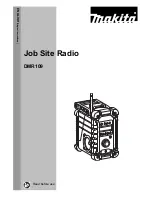
FCC Warning
Operation is subject to the following two conditions:
(1) This device may not cause interference, and
(2) This device must accept any interference, including interference that may cause undesired
operation of the device.
RF Exposure compliance Statement and operating instructions
The device has been tested against the SAR limit (8.0W/kg). The highest SAR value reported
under this standard during product certification for use at the Face up is
W/kg and when
properly worn on the body is 3.384W/kg. This device was tested for typical operations.
The device only supports simplex-mode and transmitting is no more than the rated duty cycle
factor of 50% of the time. For hand-held operation, the radio should be held at least 25mm from
the user's face. The use of belt clips, holsters and similar accessories should not contain
metallic components in its assembly. The use of accessories that do not satisfy these
requirements may not comply with RF exposure requirements, and should be avoided. Use only
the supplied or an approved antenna.
Antenna Notices:
The device equipped with a detachable antenna. This radio transmitter (identify the device by
certification number) has been approved by Industry Canada to operate with the antenna types
with the maximum permissible gain indicated. Antenna types not approved, having a gain
greater than the maximum gain indicated for that type, are strictly prohibited for use with this
device.
Note: This equipment has been tested and found to comply with the limits for a Class B
digital device, pursuant to part 15 of the FCC Rules. These limits are designed to provide
reasonable protection against harmful interference in a residential installation. This
equipment generates uses and can radiate radio frequency energy and, if not installed
and used in accordance with the instructions, may cause harmful interference to radio
communications. However, there is no guarantee that interference will not occur in a
particular installation. If th is equipment does cause harmful interference to radio or
television reception, which can be determined by turning the equipment off and on, the
user is encouraged to try to correct the interference by one or more of the following
measures:
-Reorient or relocate the receiving anten na.
-Increase the separation between the equipment and rec eiver.
-Connect the equipment into an outlet on a circuit different from that to which the
receiver is connected .
-Consult the dealer or an experienced radio/TV technician fo r help.
1.489

































